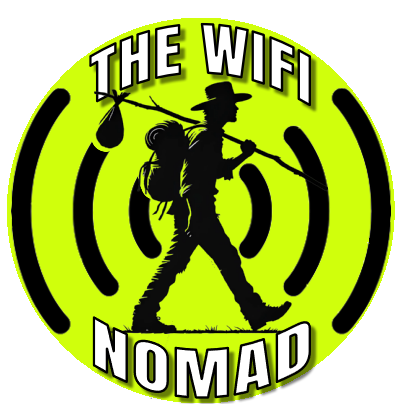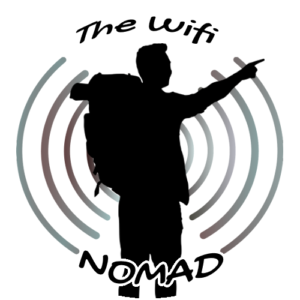I. Introduction
Imagine scrolling through Instagram, TikTok, or Facebook and stumbling upon a compelling post showcasing a product you didn’t know you needed—perhaps it’s a mini blender for your morning smoothies, or a simple budget tracker that promises financial peace of mind. In just a few seconds, you click the link in bio or swipe up on a story, and before you know it, you’re on the product page, ready to purchase. This seamless journey from social media discovery to conversion is exactly why social media marketing has become a vital tool for affiliate marketers.
In this article, we’ll dive deep into how social media platforms can supercharge your affiliate marketing efforts. We’ll examine the benefits of a well-planned social presence, ways to select platforms that align with your audience, and proven strategies to post engaging content that encourages clicks on your affiliate links. By the end, you’ll have a practical roadmap to leverage social channels—whether you’re aiming for visual narratives on Instagram, quick-fire engagement on TikTok, or informative videos on YouTube—to build trust, nurture a community, and drive affiliate sales.
II. Why Social Media Matters for Affiliate Marketers
A. Expanding Reach
One of the most obvious advantages of social media is its massive user base. Platforms like Facebook, Instagram, TikTok, YouTube, Twitter, Pinterest, and LinkedIn collectively host billions of active users. As an affiliate marketer, tapping into these audiences opens the door to countless potential buyers who might otherwise never discover your blog or website.
- Broad or Targeted: Social media isn’t just about raw numbers. Many platforms offer robust targeting options—like hashtags on Instagram or pinned topics on Pinterest—that let you refine who sees your content. If your niche is fitness for new moms, you can use relevant hashtags (#postpartumfitness, #fitmomlife) or join specialized Facebook Groups. This targeted approach places your affiliate content before people already interested in your niche, increasing the odds of driving real engagement and conversions.
B. Community & Engagement
Affiliate marketing is more than just posting links. It thrives on relationship-building, which is where social platforms shine. Interactive features—comments, direct messages, polls, live streams—create a two-way conversation that helps you understand your audience’s preferences and pain points.
- Building Trust: By regularly showing up in users’ feeds with valuable, entertaining, or inspiring content, you become a familiar presence. This ongoing interaction lays the groundwork for trust, which is critical when you’re recommending products or services. People are far more likely to click and buy through an affiliate link if they feel they know you and believe in your sincerity.
III. Choosing the Right Platforms
Not every social media channel will fit your niche or personal style. Selecting the right platform(s) ensures you invest your energy where it yields the best returns.
1. Platform Demographics
- Instagram: Known for visual storytelling. Popular with millennials and Gen Z, it’s great for lifestyle niches (fashion, travel, beauty, fitness).
- Facebook: Has a broader age range and more global distribution. Facebook Groups can be particularly valuable if your niche involves community support or in-depth discussions (e.g., parenting, personal finance).
- TikTok: Explosive growth among Gen Z and younger millennials, focusing on short, snappy videos that often go viral quickly. Excellent for comedic or highly visual products.
- YouTube: A top choice if you’re comfortable with video content. Perfect for tutorials, reviews, unboxings, or product demos. Audiences here are ready to sit through longer explanations, which is ideal for tech or more complex niches.
- LinkedIn: Suited for B2B or professional audiences, such as software tools, career coaching, or business services.
- Pinterest: Users come seeking inspiration or planning life events. Common niches include home decor, recipes, DIY, fashion, and wedding-related content.
2. Content Format Alignment
- Visual Platforms: Instagram and TikTok heavily rely on images, short videos, and reels. If you thrive on aesthetics or quick, catchy clips, these platforms might suit you best.
- Long-Form: YouTube allows deeper dives into product reviews, case studies, or educational material. Facebook Live or LinkedIn Live also cater to longer-format sessions, though their audiences differ.
- Brief Updates: Twitter can be a powerful tool for real-time engagement, trending hashtags, and witty commentary but might be less effective for complex product pitches.
3. Evaluating Your Strengths
Ask yourself: Do you love creating short, energetic videos? Are you better at weaving a story through photos? Or maybe you prefer more formal, text-based interactions. Choosing the platform where your content style naturally shines can make social media marketing far more enjoyable—and effective—over time.
IV. Creating Engaging Social Media Content
1. Storytelling & Authenticity
One major reason users follow influencers or bloggers on social media is the personal connection they feel. Instead of posting generic product photos, try weaving personal anecdotes, behind-the-scenes glimpses, or step-by-step mini-tutorials into your feed. This approach makes your content more relatable, fostering deeper trust.
- Balance: Authentic doesn’t mean oversharing or being unprofessional. Strike a sweet spot where you let followers into your process or daily life just enough to humanize your brand, yet maintain a polished, credible presence.
2. Visual Elements
A social feed is often a visual battlefield. High-quality images, short videos, or infographics can stop the scroll and draw attention to your post. Even if your niche isn’t inherently “visual,” you can incorporate relevant graphics—charts for data, screenshots for step-by-step demos, or user-generated photos if your audience participates.
- Consistent Branding: Maintaining a cohesive color palette, font style, or overall aesthetic across your posts enhances brand recognition. Tools like Canva or Adobe Express simplify the process of creating professional-looking visuals even if you’re not a designer.
3. Posting Frequency & Timing
Most social platforms allow business accounts or creators to view insights on when their followers are most active. Use these metrics to schedule posts. If your audience tends to engage more on weekend mornings, that’s when your content has the best chance of shining.
- Quality Over Quantity: Posting daily can help you gain traction, but only if each piece maintains a certain level of quality. Random filler content can dilute your brand message and turn followers off. Aim for consistency without sacrificing authenticity or relevance.
V. Integrating Affiliate Links on Social Media
1. Platform-Specific Rules & Guidelines
Every platform has its own quirks. Instagram, for instance, limits clickable links in captions, so many creators rely on the “link in bio” approach or Instagram Stories “swipe-up” (for verified or certain accounts). YouTube allows affiliate links in the description box below videos. Understanding these differences is key to placing affiliate links where they’re easily accessible.
- Disclosure: Remember to comply with each platform’s disclosure requirements and your country’s advertising regulations. An explicit mention like “#affiliate” or “(affiliate link)” can keep you legally compliant and maintain trust.
2. Contextual Placement
Nothing screams “spam” like a random product link with no explanation. Always integrate your affiliate links where they feel organic. For example, if you post a mini-tutorial on your Instagram Reels about making healthy smoothies, directing viewers to your “favorite budget-friendly blender” link in your bio makes sense.
- Tease & Inform: You can pique curiosity by showing how a product improved your routine (e.g., “This tool cut my cooking time in half”) before sharing the affiliate link. This approach emphasizes the benefit instead of the sale.
3. Lead Magnets & Landing Pages
Instead of sending people straight to a product page, consider using your social posts to funnel them to a more comprehensive landing page or blog post. This gives you room to expand on product features, comparisons, or a personal story—keeping your social feed concise while ensuring the affiliate link appears in a more in-depth context.
- Benefit: By guiding followers to your website, you also have a chance to capture emails or encourage them to explore other content. This can lead to better long-term engagement and higher affiliate sales down the line.
VI. Growth & Engagement Strategies
1. Hashtags & Keywords
Hashtags on Instagram, TikTok, or even LinkedIn can make your posts discoverable by people who don’t follow you yet but share an interest in your niche. Choose a mix of broad tags (#healthyliving) and more specific, less competitive tags (#ketobreakfastrecipes). Avoid going overboard—quality beats quantity.
- Keyword Integration: On platforms like YouTube, titles and descriptions are crucial. Incorporate keywords to rank higher in YouTube’s internal search engine. The same principle applies to Pinterest, where relevant keywords in pin titles and descriptions can significantly boost visibility.
2. Collaborations & Influencer Partnerships
Working with others in your niche can give your affiliate links a broader audience. This might involve a joint Instagram Live, a co-authored TikTok dance challenge, or a cross-promo where you both share each other’s best posts. It’s a strategic way to introduce your content to a new set of potential followers.
- Win-Win: The key is finding collaborators whose audience matches your target demographic. If you sell budget travel accessories, teaming up with a luxury travel influencer might not resonate, but partnering with another budget travel blogger could bring outstanding results.
3. User-Generated Content (UGC)
Encourage your followers to share their own photos, stories, or reviews of products you’ve recommended. This approach not only boosts credibility—since real people are showcasing their positive experiences—but also provides you with fresh content to repost and highlight.
- How to Start: Launch a hashtag campaign or a contest. For instance, if your niche is home organization, ask followers to share before-and-after photos using a specific product you recommend. Reward the best transformation with a small prize or feature on your profile.
VII. Action Steps (CTA Section)
Let’s translate these ideas into actionable tasks you can tackle immediately:
- Select Your Primary Platform
- Task: Reflect on your niche, audience demographic, and content creation strengths. Decide which platform aligns best—Instagram, TikTok, YouTube, etc. Start with one or two platforms so you don’t spread yourself too thin.
- Plan 2–3 Social Posts
- Task: Draft a mini content calendar for the upcoming week. For each post, outline the key message, accompanying visual, and how you’ll integrate an affiliate link or reference. Keep it natural—focus on storytelling or solving a problem that resonates with your audience.
- Evaluate and Refine
- Task: After posting, monitor likes, shares, comments, and link clicks. Check if your affiliate link got any traction. Are people asking questions or praising the product? Use this feedback to fine-tune future posts.
- Teaser for Next Article
- Reason: Social media works even better in tandem with an effective email strategy. Let your followers know you’ll soon dive into Email Marketing for Affiliate Marketers (Article #10), where they can learn about lead magnets, automated funnels, and more sophisticated monetization tactics.
VIII. Teaser for Next Article
“Up Next: Email Marketing for Affiliate Marketers”
Your social media presence can spark interest, but email marketing is where you can nurture relationships more personally—and more consistently. In Article #10, we’ll explore how to build an email list, craft compelling email sequences, and strategically place affiliate links so they feel welcome rather than intrusive. Whether you’re offering lead magnets like eBooks or free mini-courses, email marketing remains a gold mine for many affiliate marketers—don’t miss out on the next installment!
IX. Conclusion
Social media is often viewed as a place for quick entertainment, funny memes, or endless streams of photos. But beneath that surface, it’s a thriving marketplace where billions of people actively seek inspiration, discover new brands, and make purchase decisions on the go. As an affiliate marketer, leveraging these platforms means you’re meeting potential buyers exactly where they’re already hanging out—be it on TikTok challenges, Instagram Reels, or detailed Facebook community discussions.
Remember that successful affiliate marketing on social media hinges on authenticity. People can sense when they’re just being sold to. By sharing personal insights, genuine stories, and solutions to real problems, you become a trustworthy guide rather than a pushy salesperson. Back this up with consistent posting, smart use of hashtags and collaborations, and a focus on delivering value first. Over time, you’ll cultivate a loyal following that not only clicks your links but also recommends you to friends—multiplying your reach and impact organically.
As you implement the strategies we’ve covered, stay flexible and open to experimentation. Each platform evolves, and audience preferences shift over time. What worked last month might need a tweak or a completely new angle today. Listen to your followers, analyze your metrics, and refine your approach accordingly. And don’t forget—social media is just one piece of the puzzle. In the upcoming articles, we’ll continue exploring how it integrates with email marketing, SEO, and beyond to form a comprehensive affiliate marketing ecosystem.
Start small, stay consistent, and keep track of what resonates. Before long, you’ll see your social media profiles transform from a mere online presence to vibrant communities—and from casual engagement to profitable affiliate conversions.


